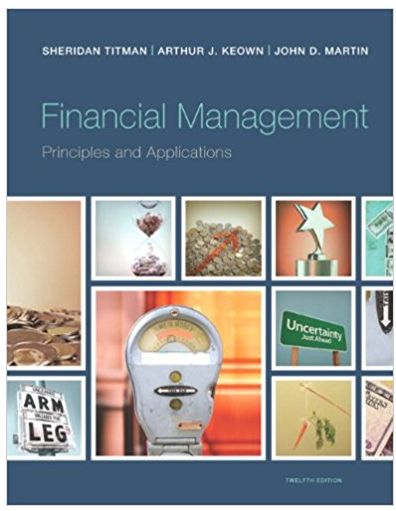Presently, H. Swank, Inc. does not use any financial leverage and has total financing equal to $1
Question:
Presently, H. Swank, Inc. does not use any financial leverage and has total financing equal to $1 million. It is considering refinancing and issuing $500,000 of debt that pays 5 percent interest and using that money to buy back half the firm’s common stock. Assume that the debt has a 30-year maturity such that Swank will have no principal payments for 30 years. Swank currently pays all of its net income to common shareholders in the form of cash dividends and intends to continue to do this in the future. The corporate tax rate on the firm’s earnings is 35 percent.
Swank’s current income statement (before the debt issue) is as follows:
Earnings before interest and taxes (EBIT) ......$100,000
Less: Interest expense.............. 0
Equals: Earnings before tax ........... $100,000
Less: Taxes .................. (35,000)
Equals: Net income ............... $ 65,000
a. If Swank issues the debt and uses it to buy back common stock, how much money can the firm distribute to its stockholders and bondholders next year if the firm’s EBIT remains equal to $1 million?
b. What are Swank’s interest tax savings from the issuance of the debt?
c. Are Swank’s stockholders better off after the debt issue? Why or why not?
d. If there were no corporate taxes on income (and consequently interest expense was not deducted from the firm’s taxable income), how would this affect your responses to parts a through c?
Maturity is the date on which the life of a transaction or financial instrument ends, after which it must either be renewed, or it will cease to exist. The term is commonly used for deposits, foreign exchange spot, and forward transactions, interest...
Step by Step Answer:

Financial Management Principles and Applications
ISBN: 978-0133423822
12th edition
Authors: Sheridan Titman, Arthur Keown, John Martin





